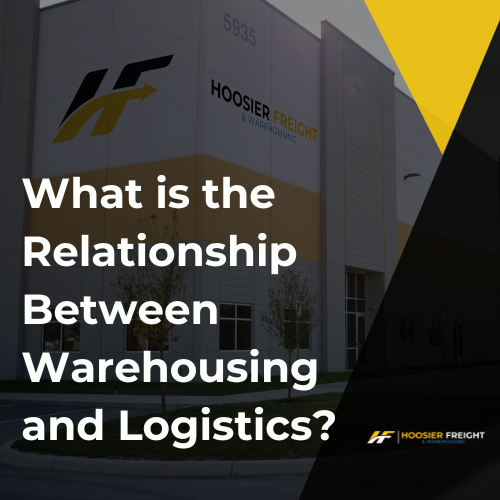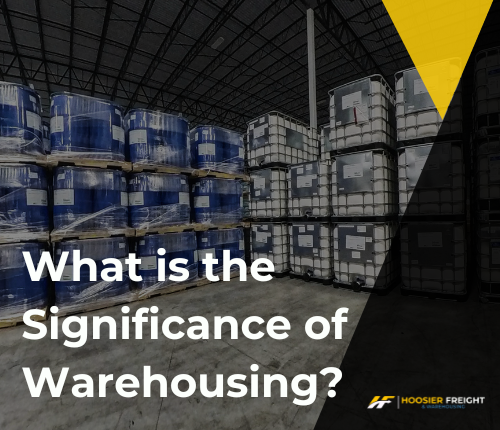
What is the Relationship Between Warehousing and Logistics?
In the complex ecosystem of supply chain management, the integration of freight and warehousing with logistics operations is crucial for achieving efficiency and meeting the dynamic demands of the market. Understanding the intricate relationship between warehousing and logistics is fundamental for businesses striving for operational excellence. This article explores how warehousing supports logistics, the importance of inventory management, the role of warehouse management in logistics, and the distinction between fulfillment and logistics, providing insights into optimizing supply chain operations.
What is the Importance of Inventory in Logistics?
Effective inventory management is the linchpin of logistics, ensuring that the right products are available at the right time and place, thus fulfilling customer demands promptly. The strategic use of warehousing in logistics significantly impacts inventory control by reducing lead times and managing stock levels efficiently, directly influencing cost reduction and customer satisfaction.
According to a report by the Council of Supply Chain Management Professionals (CSCMP), companies that excel in inventory management tend to have a 45% higher fulfillment accuracy rate compared to their competitors. This statistic highlights the critical role of warehousing in achieving logistical success, as it allows for real-time inventory tracking, demand forecasting, and streamlined order processing.
Custom Graphic Opportunity: A bar chart depicting the positive correlation between efficient inventory management and increased customer satisfaction, based on the CSCMP report findings.
What is the Relationship Between Warehousing and Logistics?
The relationship between warehousing and logistics is symbiotic, where warehousing serves as the physical space for storing goods within the logistics chain, facilitating the movement and distribution of products. Warehousing supports various logistics functions, including order fulfillment, inventory management, and goods consolidation, making it an indispensable element of the supply chain.
For instance, Amazon’s revolutionary approach to warehousing and logistics has set new industry standards. By integrating advanced warehouse management systems (WMS) with their logistics operations, Amazon has achieved unparalleled efficiency in order fulfillment and delivery speed. This example illustrates how the strategic alignment of warehousing with logistics functions can enhance supply chain fluidity and responsiveness.
Custom Graphic Opportunity: An infographic showcasing the cycle of warehousing in the logistics chain, emphasizing key processes like storage, inventory management, and distribution, inspired by Amazon’s model.
What is Warehouse Management in Logistics?
Warehouse management in logistics focuses on optimizing warehouse operations to support the broader logistics and supply chain strategy. It involves a range of activities from inventory control and order processing to workforce management and facility layout planning.
The advent of digital technologies has transformed warehouse management. Implementing a Warehouse Management System (WMS) can lead to a 25% increase in inventory accuracy and a 30% reduction in order processing time, as reported by Logistics Management. This data underscores the importance of warehouse management in enhancing logistics efficiency, demonstrating how technology can bridge the gap between warehousing operations and logistic demands.
Types of warehouses, such as distribution centers, automated warehouses, and specialized storage facilities, cater to different logistical needs, highlighting the versatility of warehousing in supporting various aspects of logistics.
Is Fulfillment the Same as Logistics?
While fulfillment and logistics are closely linked, they are not the same. Fulfillment specifically refers to the process of picking, packing, and shipping orders to customers, a critical component of the e-commerce supply chain. Logistics, on the other hand, encompasses a broader range of activities, including warehousing, transportation, and inventory management, overseeing the movement of goods across the entire supply chain.
This distinction is crucial for businesses to understand, as optimizing each component requires different strategies and technologies. For instance, a robust logistics framework might include advanced transportation management systems (TMS) and integrated supply chain solutions, whereas fulfillment optimization might focus on automation and efficient warehouse layout design for faster order processing.
The dynamic relationship between warehousing and logistics is foundational to effective supply chain management. By understanding and leveraging this relationship, businesses can enhance operational efficiency, reduce costs, and improve customer satisfaction. Adopting advanced warehouse management strategies and recognizing the critical role warehousing plays in logistics are key steps toward achieving supply chain optimization.
For further insights into optimizing your supply chain, explore our comprehensive guide on freight and warehousing.
Discover how our warehousing solutions can enhance your logistics operations. Visit our services page for more information.



